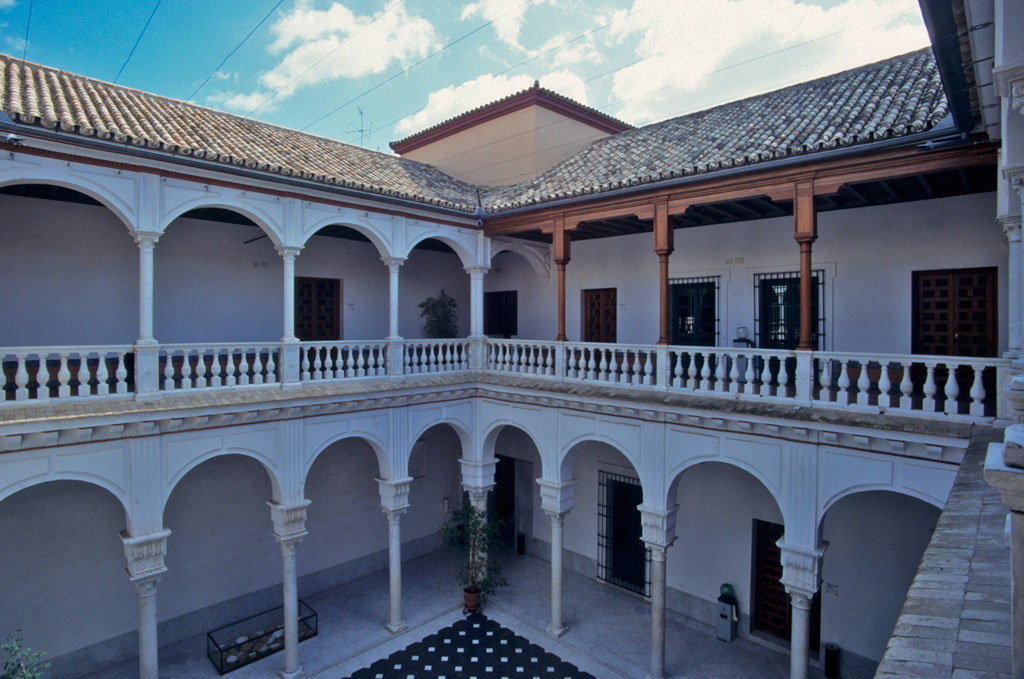
El Palacio de Mañara representa un claro ejemplo de la arquitectura de la Sevilla renacentista, enclavado en la antigua Judería de Sevilla. No obstante, más allá de su valor artístico o su estratégica ubicación, atrae al viajero por su historia, pues en este edificio nació uno de los sevillanos más ilustres: el Venerable siervo de Dios don Miguel de Mañara, y por los avatares posteriores del inmueble. En la actualidad, tras una exhaustiva rehabilitación, acoge oficinas de la Consejería de Cultura de la Junta de Andalucía.
The Palacio de Mañara, located in Seville’s old Jewish Quarter, represents a perfect example of architecture from city’s Renaissance. However, beyond its artistic value and strategic location, it attracts travellers due to its history, for one of the most illustrious Sevillians was born in this building- in this building was born one of the most illustrious Sevillians- the Venerable Servant of God Don Miguel de Mañara. After years of restoration, today it is home to the Ministry of Culture of the Junta de Andalucía.
Miguel de Mañara fue una de las figuras más sobresalientes de su época, sujeto de leyendas trasmitidas de generación en generación y, ante todo, gran impulsor de la Santa Caridad de Sevilla. Este reconocido personaje de la Sevilla barroca nació en el seno de una familia acaudalada, natural de Córcega (Italia) y atraída por el dinamismo comercial de la Sevilla que monopolizaba las comunicaciones con el Nuevo Mundo. Los Mañara se hicieron con la casa de la calle Levíes y aquí vino al mundo y vivió quien le ha dado nombre desde entonces.
De aquel palacio de los siglos XVI y XVII, de origen mudéjar y renacentista, apenas se conserva la fachada y el patio central con arquería de columnas en sus dos plantas. Tras la muerte de Mañara el palacio pasó por diferentes manos, incluso sirvió para acoger a las tropas del mariscal Soult con la ocupación napoleónica de Sevilla a comienzos del siglo XIX, y en el XX fue usada como fábrica.
Y sin embargo la Casa Mañara ha llegado a nuestros días como una elegante casa palacio gracias a la profunda rehabilitación del barrio de San Bartolomé a finales del siglo XX. Las visitas se organizan junto al Palacio de Altamira.
Dirección: C/ Levíes, 27
Teléfono: 955 036 000
Horario: martes y jueves (no festivos), de 11.00 a 12.30 horas
Miguel de Mañara, a great promoter of the Holy Charity of Seville, was one of the most outstanding figures of his time and became the subject of legends passed down from generation to generation. This famous personality from the Baroque period was born into a wealthy family originally from Corsica, Italy, that was attracted to Seville due to its commercial dynamism and monopoly of communications with the New World. Miguel de Mañara was born and lived in the family’s house on Calle Levíes, which is now named after them.
Dating back to the 16th and 17th centuries, the building, which is of the Mudejar and Renaissance style, barely preserves the original façade and central patio. After the death of Mañara, the palace passed through various hands and was even used to accommodate Marshal Soult’s troops during the Napoleonic occupation of Seville at the beginning of the 19th century.
And yet, today, the Casa Mañara remains an elegant palace thanks to the extensive rehabilitation of the San Bartolomé neighborhood at the end of the 20th century. The visits are organized next to the Altamira Palace.
